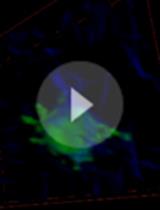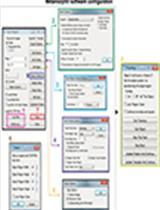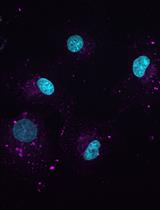- Submit a Protocol
- Receive Our Alerts
- Log in
- /
- Sign up
- My Bio Page
- Edit My Profile
- Change Password
- Log Out
- EN
- EN - English
- CN - 中文
- Protocols
- Articles and Issues
- For Authors
- About
- Become a Reviewer
- EN - English
- CN - 中文
- Home
- Protocols
- Articles and Issues
- For Authors
- About
- Become a Reviewer
Scratch Wound Healing Assay
Published: Vol 2, Iss 5, Mar 5, 2012 DOI: 10.21769/BioProtoc.100 Views: 124525

Protocol Collections
Comprehensive collections of detailed, peer-reviewed protocols focusing on specific topics
Related protocols

Imaging of Human Cancer Cells in 3D Collagen Matrices
Karin Pfisterer [...] Maddy Parsons
Jan 20, 2021 6238 Views

Studying Chemotactic Migration in Dunn Chamber: An Example Applied to Adherent Cancer Cells
Khedidja Benseddik and Kossay Zaoui
Feb 5, 2022 2925 Views

Image-based Quantification of Macropinocytosis Using Dextran Uptake into Cultured Cells
Anh H. Le and Laura M. Machesky
Apr 5, 2022 4137 Views
Abstract
The scratch wound healing assay has been widely adapted and modified to study the effects of a variety of experimental conditions, for instance, gene knockdown or chemical exposure, on mammalian cell migration and proliferation. In a typical scratch wound healing assay, a “wound gap” in a cell monolayer is created by scratching, and the “healing” of this gap by cell migration and growth towards the center of the gap is monitored and often quantitated. Factors that alter the motility and/or growth of the cells can lead to increased or decreased rate of “healing” of the gap (Lampugnani, 1999). This assay is simple, inexpensive, and experimental conditions can be easily adjusted for different purposes. The assay can also be used for a high-throughput screen platform if an automated system is used (Yarrow and Perlman, 2004).
Materials and Reagents
- Human MDA-MB-231 cell line (ATCC, catalog number: HTB-26 ™)
- Dulbecco's modified eagle medium (DMEM) (Life Technologies, Invitrogen™, catalog number: 10313-021 )
- Fetal bovine serum (FBS) (ATCC, catalog number: 30-2020 ™)
- Phosphate buffered saline (PBS) (Life Technologies, Invitrogen™, catalog number: 14190-144 )
- Glutaraldehyde (Sigma-Aldrich, catalog number: G6257 )
- Ethanol (Sigma-Aldrich, catalog number: 459836 )
- Crystal violet (Sigma-Aldrich, catalog number: C3886 )
Equipment
- BD Falcon 24-well tissue culture plate (Fisher Scientific, catalog number: 08-772-1H; BD Biosciences, catalog number: 353226 )
- Rainin pipet tips (1 ml) (Mettler-Toledo, catalog number: GPS-L1000 )
- Cell culture incubator: 37 °C and 5% CO2
Software
- Photoshop or ImageJ (http://rsb.info.nih.gov/ij/download.html)
Procedure
- Grow cells in DMEM supplemented with 10% FBS.
- Seed cells into 24-well tissue culture plate at a density that after 24 h of growth, they should reach ~70-80% confluence as a monolayer.
- Do not change the medium. Gently and slowly scratch the monolayer with a new 1 ml pipette tip across the center of the well. While scratching across the surface of the well, the long-axial of the tip should always be perpendicular to the bottom of the well. The resulting gap distance therefore equals to the outer diameter of the end of the tip. The gap distance can be adjusted by using different types of tips. Scratch a straight line in one direction.
- Scratch another straight line perpendicular to the first line to create a cross in each well.
- After scratching, gently wash the well twice with medium to remove the detached cells.
- Replenish the well with fresh medium.
Note: Medium may contain ingredients of interest that you want to test, e.g., chemicals that inhibit/promote cell motility and/or proliferation.
- Grow cells for additional 48 h (or the time required if different cells are used).
- Wash the cells twice with 1x PBS, then fix the cells with 3.7% paraformaldehye for 30 min.
- Stain the fixed cells with 1% crystal violet in 2% ethanol for 30 min.
- Take photos for the stained monolayer on a microscope. Set the same configurations of the microscope when taking pictures for different views of the stained monolayer. The gap distance can be quantitatively evaluated using software such as Photoshop or ImageJ (http://rsb.info.nih.gov/ij/download.html). To reduce variability in results, it’s suggested that multiple views of each well should be documented, and each experimental group should be repeated multiple times.
Acknowledgments
This protocol was developed in the Department of Immunology, Scripps Research Institute, La Jolla, CA, USA and adapted from Lampugnani (1999) and Yarrow et al. (2004). The work was funded by NIH grants CA079871 and CA114059, and Tobacco-Related Disease, Research Program of the University of California, 15RT-0104 to Dr. Jiing-Dwan Lee [see Chen et al. (2009)].
References
- Chen, Y., Lu, B., Yang, Q., Fearns, C., Yates, J. R., 3rd and Lee, J. D. (2009). Combined integrin phosphoproteomic analyses and small interfering RNA--based functional screening identify key regulators for cancer cell adhesion and migration. Cancer Res 69(8): 3713-3720.
- Lampugnani, M. G. (1999). Cell migration into a wounded area in vitro. Methods in Mol Biol 96: 177-182.
- Yarrow, J. C., Perlman, Z. E., Westwood, N. J., Mitchison, T. J. (2004). A high-throughput cell migration assay using scratch wound healing, a comparison of image-based readout methods. BMC Biotechnol 4: 21.
Article Information
Copyright
© 2012 The Authors; exclusive licensee Bio-protocol LLC.
How to cite
Chen, Y. (2012). Scratch Wound Healing Assay. Bio-protocol 2(5): e100. DOI: 10.21769/BioProtoc.100.
Category
Cancer Biology > Invasion & metastasis > Cell biology assays > Cell migration
Cell Biology > Cell movement > Cell migration
Cell Biology > Cell viability > Cell proliferation
Do you have any questions about this protocol?
Post your question to gather feedback from the community. We will also invite the authors of this article to respond.
Share
Bluesky
X
Copy link








